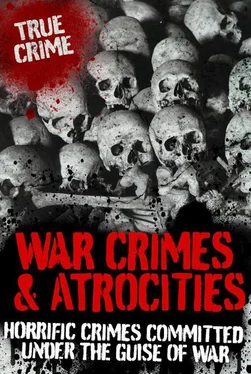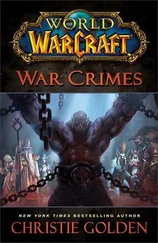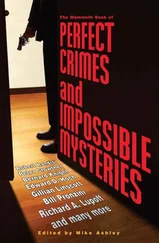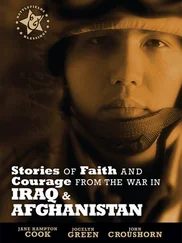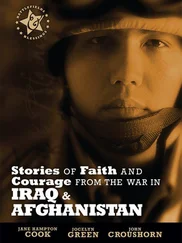In an effort to get detailed evidence on what had occurred during the Korean War, a War Crimes Division in Korea was set up. It was divided into several branches – the Case Analysis Branch, the Investigations Branch and the Historical Branch – each one having their own important role to play in the investigations. The evidence produced before the committee conclusively proved that US prisoners of war, who were not deliberately murdered at the time of capture, were beaten, wounded, starved, tortured, molested, displayed in public and openly humiliated before Korean civilians. On top of this, they were forced to march long distances without food, water, shelter, clothing or adequate medical attention. In specially set-up Communist prison camps, there were further acts of human indignities, as well as massacres on an extremely large scale.
The following cases, which were presented to the War Crimes Division, represent just a few of the atrocities commited by the North Korean and Chinese Communist armies:
THE HILL 303 MASSACRE
A group of 26 US soldiers were captured by the North Koreans on 14 August, 1950. The soldiers were stripped of their combat boots and personal belongings and their hands were tied behind their backs. The following day a further 19 soldiers joined their group, bringing the total number to 45. On the third day the prisoners were led to a ravine and, with their hands still tethered, were shot in cold blood. One by one the soldiers fell, and only four managed to survive the ordeal to tell exactly what had happened.
THE SUNCHON TUNNEL MASSACRE
In October 1950, when the fall of the city of Pyongyang seemed imminent, the North Koreans loaded about 180 US war prisoners into open railway carriages to be transported to the north. These men were already weak from lack of food and water, having been survivors of the Seoul-Pyongyang death march. For five days they were exposed to the raw Korean climate, and on 30 October they arrived at the Sunchon tunnel.
Late in the afternoon, the prisoners were taken from the railway carriages in small groups and marched towards some nearby ravines, under the pretext of being given their first food for several days. Instead, they were ruthlessly shot, using Russian burp guns.
A total of 138 US soldiers lost their life on that fateful occasion – 68 were murdered, seven died of malnutrition and the remainder of pneumonia, malnutrition and dysentery on the horrendous ride from Pyongyang.
TAEJON MASSACRE
On 27 September, 1950, approximately 60 US soldiers who had been imprisoned at Taejon had their hands wired together and were taken in small groups out into the prison courtyard. They were forced to sit hunched together in previously dug ditches, and then shot at point-blank range by North Korean soliders. Only one soldier lived to tell his gruesome tale.
In addition to this slaughter, a number of Korean civilians, believed to be as many as 5,000–7,000, together with soldiers of the Republic of Korea, were killed at Taejon between 23 and 27 September, 1950.
BAMBOO SPEAR CASE
In December 1950, five US airmen were killed when their convoy of trucks was ambushed by North Korean forces. When their bodies were later discovered by a South Korean patrol, it showed that their flesh had been punctured in as many as 20 different places. The instrument of severe torture was a heated bamboo stick, and the soldiers were literally left to bleed to death from their perforations.
MURDER AT NAEDAE
On 13 October, 1950, a dozen US soldiers were held captive in a Korean hut in a village near Naedae. Without any warning the North Koreans opened fire, killing all but five. One of the survivors said that he heard the first shot and one of his companions, who had been hit in the chest, slumped forward. He said he reacted quickly and hid under a nearby desk, playing dead. A little later he felt someone kick him, still he remained inactive and, even after being shot in the leg he continued to play dead. Eventually, the Korean soldiers left and he lived to tell the tale.
CHAPLAIN-MEDIC MASSACRE
North Korean forces surprised and slaughtered approximately 20 US soldiers on 17 July, 1950. At the time of the killings, the soldiers were being tended to by a regimental surgeon wearing a Red Cross armband. Also present was an army chaplain, who could easily be identified by his Christian cross; neither of these men carried a weapon. The chaplain was killed with the soldiers, but the surgeon, despite being badly wounded, managed to survive the ordeal.
JEJU MASSACRE
The Jeju massacre was a suppression against an armed rebellion on Jeju island, South Korea, during the period of 3 April, 1948 to 21 September, 1954. A number of elements led to the massacre, including a complex cooperation between guerilla forces, police, youth groups, local and national armies with a strong US influence. The South Korean right-wing government decided to carry out nationwide campaigns in an effort to flush out communists and their sympathizers. Communist influence was strong on Jeju island and the campaign led to nationwide unrest. Many decided to resort to armed resistance against the actions of the government.
When the US government backed out of helping to organize the Korean elections, labour party leaders staged massive rallies to demand reunification. In the first of the rallies, police killed six protestors. On 3 April, 1948, rebels relaliated by attacking police stations and government offices, killing an estimated 50 policemen.
When the trouble first started, rebels were given the label ‘communist’ purely for political reasons, when in truth their motives had nothing to do with communism. The trouble had really started when there was a major crackdown on the islanders’ smuggling activities, which was their main source of income. Locals, who were accused of being either smugglers or Communists, were subjected to torture, rape, killings and random incarcerations. This resulted in an angry attack by the locals on all the police stations on the island. The rebels broke into the police stations, freed their relatives and stole arms before retreating. This gave them the upper hand until support arrived from the mainland. Stripped of both arms and ammunition, the police were left in a vulnerable state. The Korean’s 9th regiment who, although they were armed, had not been allowed any ammunition as the USA still held power over the island.
The government invasion began on 25 June, which resulted in thousands of people being detained in four separate groups. These groups were divided on their perceived security risk – A, B, C and D. On 30 August, a written order was received by a senior intelligence officer in the South Korean Navy, which instructed the Jeju police to kill all those held in groups C and D by firing squad.
The rebellion continued until the end of the Korean War and it is estimated that as many as 30,000 to 80,000 islanders were killed during this period.
1968

The villages of central Vietnam are known collectively as ‘My Lai’ (literal translation ‘Son My’), and have been subjected to the most horrific acts of war. The so-called My Lai massacre, took place on 16 March 1968, and was a turning point in the public’s view of the Vietnam War. In a period of just three hours, over 500 Vietnamese civilians, many women and children, were slaughtered in cold blood at the hands of US soldiers.
My Lai lay in the South Vietnamese district of Son My, an area that had been heavily mined by the Vietcong. Many soldiers of Charlie Company, a unit of the US Division’s 11th Infantry Brigade, had been maimed or killed in the area, which had left them angry and frustrated. Led by Lieutenant William Calley, Charlie Company entered My Lai, expecting to be confronted by the elusive 48th Vietcong Battalion.
Читать дальше
